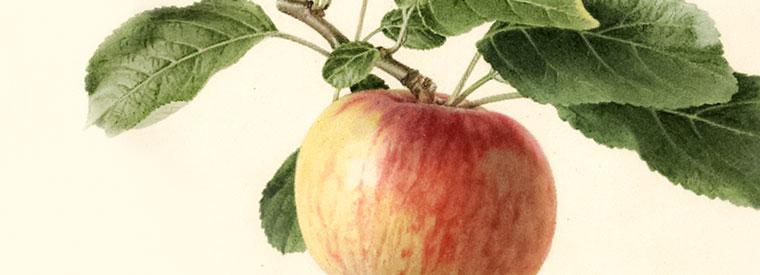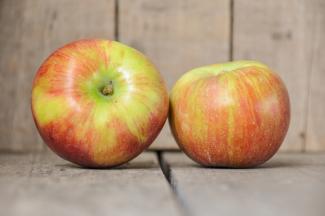Fine fruit is the most perfect union of the useful and the beautiful that the earth knows.

Fruit
JONATHAN is also called Phillip Rick and Ulster Seedling. There is a strain called Red Jonathan. When it was introduced in the 1820s, its similarity to the Esopus Spitzenburg prompted it to be called the New Spitzenburg, and it is considered a seedling of Esopus Spitzenburg. It originated on the farm of Philip Rick, Woodstock, Ulster County, New York, and was first described by Judge J. Buel, who named it for Jonathan Hasbrouck, the finder. There are numerous sports and strains including a Double Red from Experiment Station at Kearneysville, West Virginia. Medium size and round in shape, but tapering toward the blossom end, the yellow skin is nearly covered with bright red stripes and blush. The white flesh of this dessert apple is firm, tender, and juicy, with a sprightly subacid flavor. The tough, yet thin skin is smooth and dry to the touch. One of the few self-fruitful apples, the moderately vigorous tree bears early, annually, and heavily, and the tree remains fairly small with slender, delicate growth. Its leaves are dull, somewhat coarse and pubescent, and the serrations are irregular and coarse. Jonathan is subject to fireblight, mildew, and cedar apple rust, but is scab resistant. Often, fireblight will kill the tree. It stores for only a short time and ripens in late September and early October.
Ripening Period
- Early Fall - September
- Mid Fall - October
Other Features
- Pollen Sterile


